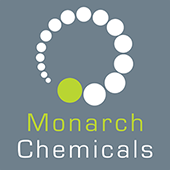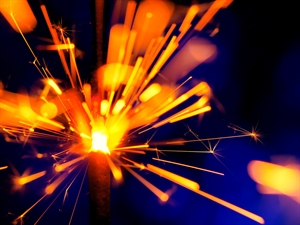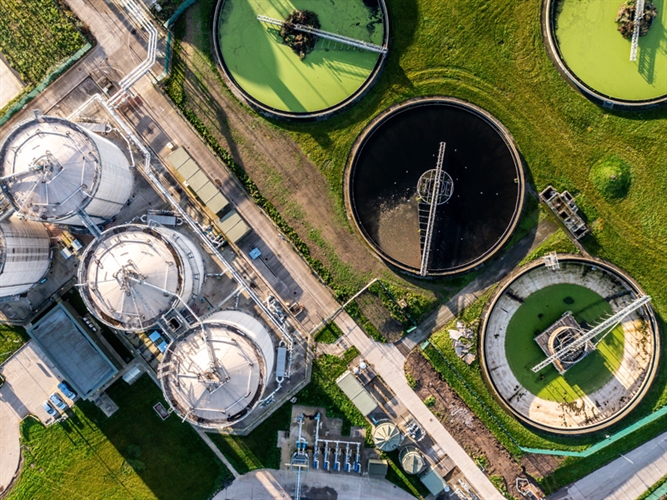As Bonfire Night approaches in the UK, fireworks are on everyone’s mind, but the chemical reactions behind these brilliant displays have far-reaching applications beyond just entertainment.
Pyrotechnics and combustion-based processes also play vital roles in industries like aerospace, military, and emergency response. The vivid flames, powerful explosions, and controlled combustion that we associate with fireworks are the result of carefully selected chemical compounds, many of which also serve critical functions in propellants, flares, and flash powders.
In this article, we’ll explore 10 key chemicals commonly used not only in fireworks but also in industrial pyrotechnics and other combustion-based applications. Whether you are involved in manufacturing propellants, emergency illuminations, or flash powders, these chemicals are central to controlled reactions and desired effects.
Potassium Nitrate
Also known as saltpetre, potassium nitrate is a powerful oxidizer that provides the oxygen necessary for combustion. Its historical significance as a core ingredient in black powder extends into modern applications where controlled and sustained combustion is critical.
Key Applications:
- Black powder: Used in fireworks and firearms, potassium nitrate is part of the classic gunpowder formulation with sulphur and charcoal.
- Propellants: In rockets and other propulsion systems, potassium nitrate is used to control the burn rate and thrust of solid rocket fuels.
- Explosives: Common in mining and demolition for controlled blasts.
By providing a reliable oxygen source, potassium nitrate ensures the efficient combustion of fuel, making it invaluable in both pyrotechnics and industrial applications.
Strontium Nitrate
Strontium nitrate is prized not only for its vivid red flame in fireworks but also for its role in producing highly visible emergency flares. As an oxidizer, it provides a steady burn that’s essential for many signalling devices.
Key Applications:
- Red fireworks: The deep crimson colours in fireworks are produced by strontium compounds.
- Flares and signal devices: Strontium nitrate is commonly used in marine, military, and roadside emergency flares due to its bright visibility.
- Tracer rounds: In military applications, strontium helps trace the path of bullets in low-light conditions.
Strontium nitrate is key for ensuring the colour intensity and stability of compositions, especially in life-saving emergency equipment.
Potassium Perchlorate
Potassium perchlorate is a stable, high-energy oxidizer that is widely used in modern pyrotechnics and industrial pyrotechnic devices. Its safety and efficiency make it preferable to potassium nitrate in many high-performance applications.
Key Applications:
- Flash powders: Potassium perchlorate is used in mixtures that create the bright flashes seen in fireworks and stage effects.
- Propellants and pyrotechnic stars: It helps regulate combustion in solid rocket propellants and fireworks' star compositions.
- Airbag systems: Potassium perchlorate is used in automotive airbags to control the rapid inflation through combustion.
This chemical is favoured for its ability to release large amounts of energy while remaining stable during handling and storage, making it indispensable for both fireworks and automotive safety devices.
Aluminium Powder
Aluminium powder serves dual roles in pyrotechnics and various industrial processes, known for its capacity to produce intense light and heat. When ignited, it creates bright flashes, making it useful in both fireworks and more practical applications.
Key Applications:
- Flash powders: Aluminium is a core ingredient in mixtures that create blinding flashes and is the main component used in most fireworks.
- Thermite reactions: Used in welding and cutting metals, thermite (a mixture of aluminium powder and iron oxide) generates extreme heat for industrial processes.
- Military pyrotechnics: Aluminium is used in incendiary bombs and munitions to create heat and intense light.
Aluminium’s high-energy combustion is essential for intense lighting effects, as well as for producing high temperatures in welding and military applications.
Magnesium
Magnesium is another metal that produces bright, white light when burned. Its role extends beyond fireworks, playing a vital part in both emergency and military pyrotechnics due to its reliability in extreme conditions.
Key Applications:
- Illumination flares: Magnesium is used in military and emergency flares to produce intense, long-lasting light, often seen in rescue missions or combat zones.
- White fireworks: Magnesium’s brilliant white flame is central to high-visibility fireworks.
- Incendiary devices: In munitions, magnesium is used to generate intense heat for igniting fires.
Its ability to burn at extremely high temperatures makes magnesium a go-to material in both visual and functional pyrotechnics.
Barium Nitrate
Barium nitrate serves as both an oxidizer and a colourant in pyrotechnic compositions. Its dual role makes it useful in not only fireworks but also in creating flares and signal lights with a green hue.
Key Applications:
- Green fireworks: Barium compounds are responsible for the green colours in pyrotechnic displays.
- Signal flares: Barium nitrate is used in military and emergency flares to produce bright green flames, increasing visibility.
Barium nitrate’s ability to produce colour while facilitating combustion ensures its role in both entertainment and industrial safety applications.
Sulphur
Sulphur remains an essential component in pyrotechnic formulations, particularly in black powder and industrial applications where ignition reliability is critical.
Key Applications:
- Black powder: As one of the main components of traditional gunpowder, sulphur helps fuel the combustion reaction.
- Industrial explosives: Sulphur is used in dynamite and other industrial explosives for mining and construction.
- Matches and ignition devices: Sulphur’s low ignition temperature makes it useful for matchsticks and ignition materials.
Sulphur’s ability to lower ignition temperatures and enhance the combustibility of mixtures keeps it relevant in modern explosives and pyrotechnics.
Charcoal (Carbon)
Charcoal, or carbon, serves as a fuel in pyrotechnics and industrial explosives. Its slow-burning characteristics allow for controlled explosions, making it key in both fireworks and black powder-based propellants.
Key Applications:
- Black powder: Charcoal provides the fuel component in black powder, allowing for sustained combustion.
- Rocket propellants: Charcoal is sometimes used in propellant formulations to regulate burn rates.
- Fireworks: In fireworks, charcoal is used to create sparkling, crackling effects.
Carbon’s role in providing fuel to combustion reactions makes it fundamental in both recreational and industrial explosive technologies.
Copper Compounds
Copper compounds are not just for creating blue fireworks; they also play a key role in producing high-contrast flames for industrial applications like flame-testing equipment and military flares.
Key Applications:
- Blue fireworks: Copper compounds are the primary source of blue flames in fireworks displays.
- Flame testing: Copper is used in industrial settings for flame tests to identify the presence of certain gases or chemicals.
- Pyrotechnic stars: Copper is commonly used in stars to create visually striking displays, including for signalling purposes.
In both fireworks and functional pyrotechnics, copper compounds ensure vivid colouration and controlled burning.
Calcium Carbonate
Calcium carbonate is a compound widely used in pyrotechnics and combustion applications. It is often used to produce orange flame colours and acts as a stabiliser in pyrotechnic compositions.
Key Applications:
- Orange fireworks: Calcium carbonate is a common ingredient in pyrotechnic mixtures for producing bright orange flames.
- Flame stabilisation: It helps to stabilise combustion reactions, ensuring consistent and reliable burning.
- Heat-resistant coatings: Calcium carbonate is also used industrially as a filler and to create heat-resistant coatings in high-temperature applications.
Calcium carbonate’s stability and non-hygroscopic nature make it ideal for both pyrotechnic displays and industrial processes where consistent performance is critical.
Conclusion: The Versatility of Combustion Chemistry
The chemicals used in pyrotechnics and combustion-based applications don’t just light up the sky on Bonfire Night; they serve crucial roles across a range of industries. From propellants that power rockets to the flares that signal for help, each compound in this list contributes to a wide spectrum of industrial and safety applications.




